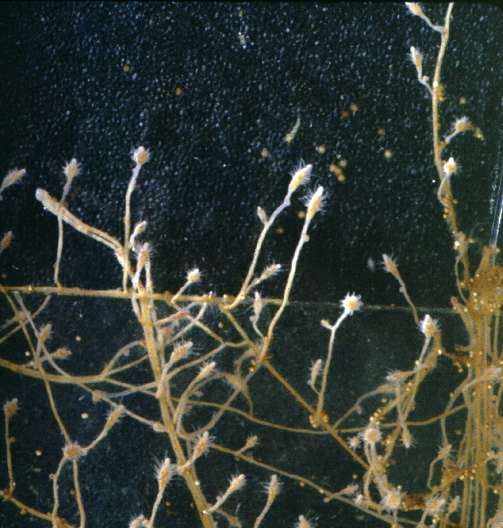Computational Ecology
Modeling ecosystems
Ecosystems are extraordinarily complex assemblages of plants and animals interacting with each other, with the physical environment, and, increasingly, with humans. Ecology is the scientific field that seeks to understand ecosystems. Ecologists are turning to computer models to help them make their models of ecosystem processes concrete and to provide predictions about the future of the ecosystem. Computer models allow rapid testing of ecology ideas by simulation and provide the means to run “what-if” scenarios that would be difficult or impossible otherwise.
The School’s AI Laboratory, MaineSAIL, has ongoing computational ecology research at both the small scale (predator-prey interactions) as well as larger, ecosystem-wide simulation.
Predator-prey interactions
In marine ecosystems, surfaces that become cleared, for example by wave action or physical scraping, are colonized by organisms that interact and develop over time into so-called “fouling communities”. Predicting where the succession of species will lead the community (e.g., mussel-dominated, barnacle-dominated, etc.) is difficult, as there are many factors affecting succession. Since ships’ hulls, as well as new pilings and other underwater structures, fall into the category of cleared surfaces, studying these ecological systems is of more than academic interest.

One potential determinant of the climax fouling community is predation of some early settlers on others. In some estuarine communities, for example in New England, hydroids (colonial cnidarians similar to freshwater hydra) are early settlers. They are preyed upon by nudibranchs (sea slugs). Hydroids, in turn, prey on other larvae settling on the substrate, but they prey on different kinds of larvae preferentially. Thus the degree of predation by nudibranchs on hydroids will likely affect the succession in the system.
We have developed a predator-prey model for the nudibranch-hydroid system. By running simulations of the model under various conditions of assumed growth, etc., of the species, biologists can make predictions about the likely outcome of the predation events as well as the resulting impact on community succession.
Ecosystem-scale models
Work is currently ongoing to extend our computational ecology work to the level of an entire ecosystem. The goal of the MEME (Maine Ecosystem Model of Estuaries) project is to create a simplified model of community succession in an estuary by instantiating multiple small-scale ecological models (e.g., predator-prey model) and interpolating the results across the estuary.
Another, multi-disciplinary project for ecosystem modeling is being conducted in conjunction with researchers in UMaine’s School of Marine Science. Tools from computer simulation and modeling (e.g., agent-based simulation) as well as machine learning (e.g., learning classifier systems) are used to help biologists and others model the ecology of the Gulf of Maine, in particular with respect to lobsters, sea urchins, and groundfish. In addition to furthering the understanding of the Gulf, an ultimate goal is to develop complex adaptive system models that can be used by regulators to create more appropriate fisheries management regulations than is currently possible. The project includes computer scientists from MaineSAIL and UMA, .biologists, physical oceanographers, economists, and ecologists from SMS, and a MacArthur Fellow from Colby.
